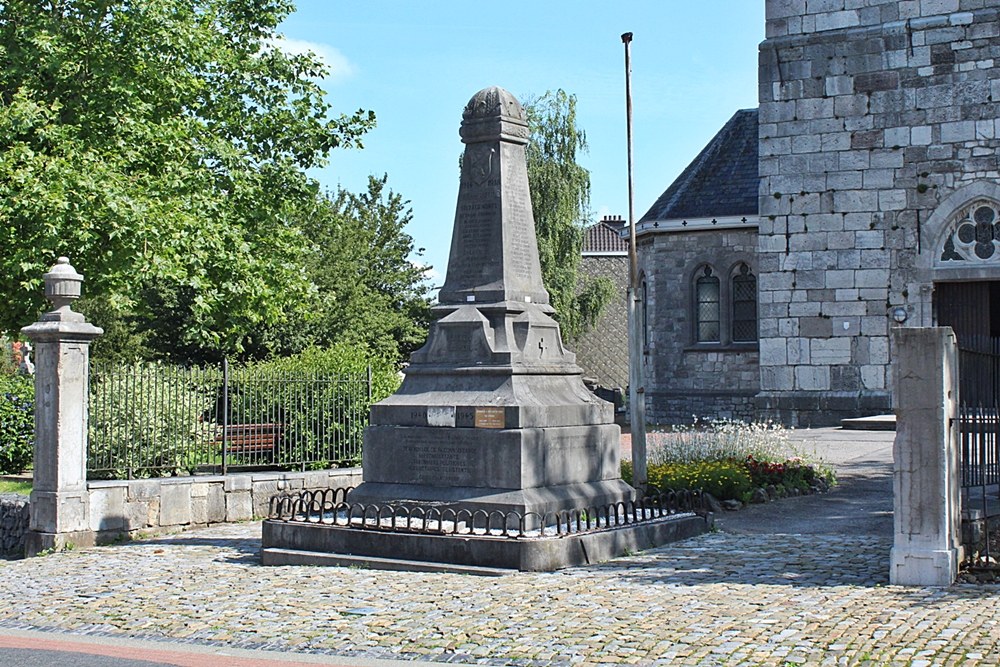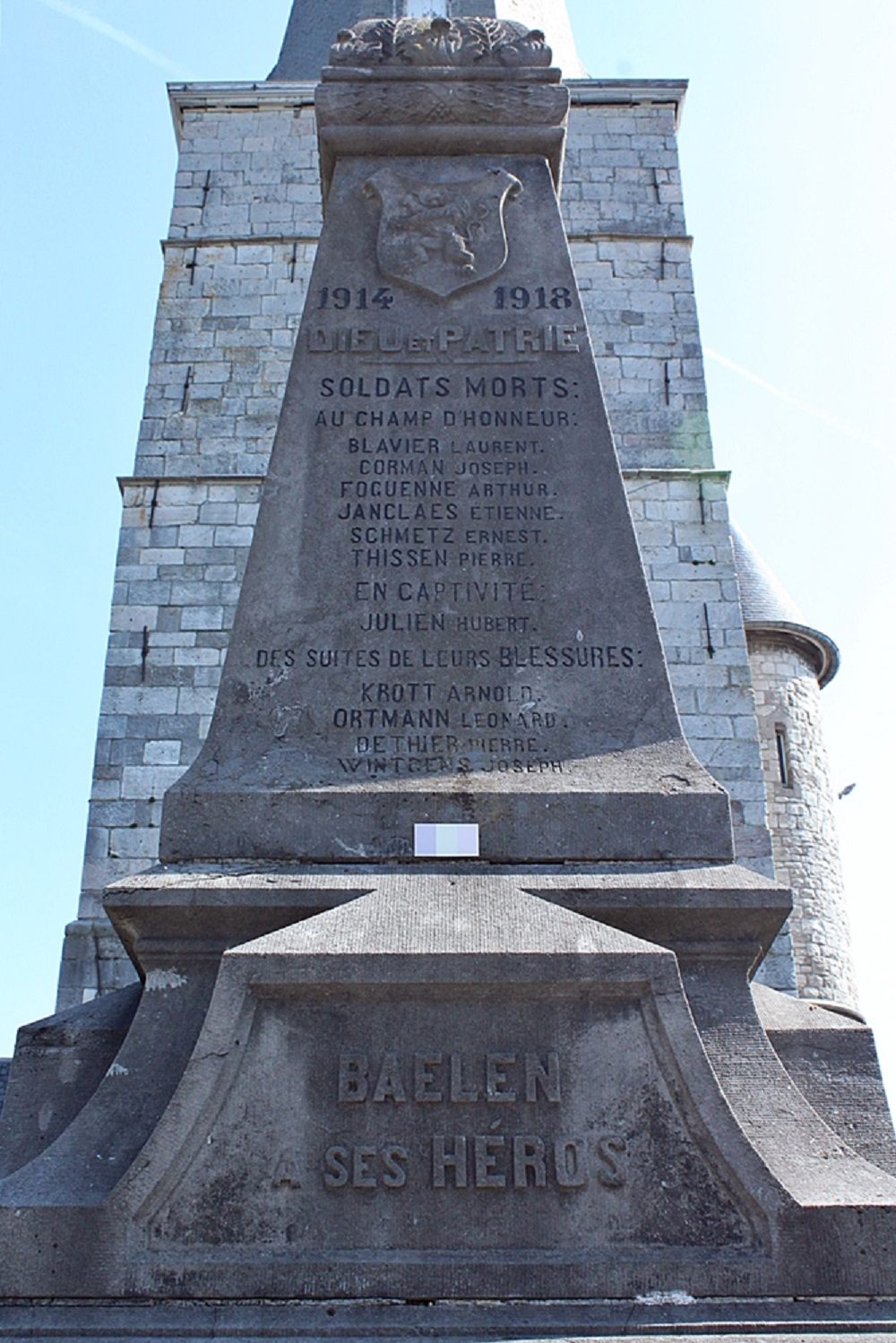War Monument Baelen
At the entrance of St. Paul's Church in Baelen is the war memorial that commemorates the fallen and missing soldiers, prisoners of war and civilian victims of both wars.
The first World War
During the First World War, Baelen lay on the border with the German Empire. In early August, a strange occurrence occurred at the Overoth customs post. A richly dressed lady from Spa turned out to be the princess of Schaumburg-Lippe. She was related to the German Emperor and had been urgently recalled to Germany.
A few days before the German invasion, Belgian lancers on horseback had camped at the Corman farm on the Thier. From the roof windows they saw how the enormous German troops crossed the border on 4 August. From the morning of August 4, thousands of German soldiers and rolling stock moved through the village. In the evening of August 7, the German soldiers appeared to be nervous and shots were fired several times during the night. Three houses were set on fire. By morning, seven corpses of shot civilians were counted. Two days later, early on Sunday, August 9, eight more civilians were killed, including an 11-year-old boy. In the course of the day two elderly servants would be murdered on a farm in Houyoux. The Tiquet factory and the neighboring house went up in flames.
Mr Mertzenich, a teacher in Baelen, was arrested and died in 1915 in the German prison Chartreuse in Liège. One of the rare political prisoners was Mr. Henon. He was interned for two years for speaking out against the Germans. Certainly not common were those who enriched themselves during this war by trading with and for the German army. Locally, these figures were called 'les Pudding'. After the war, collaborators were also hunted here. The women had their hair cut in public. This haircut was scornfully called 'Boubikopf' here.
Source: La guerre à Baelen-Membach en 1914-1918, on the municipal website, https://www.baelen.be/loisirs/histoire/baelen-a-travers-les-ages/la-guerre-a-baelen- membach-en-1914-1918.
About the monument
This bluestone monument was designed by architect Ch. Philippart from Herve and was made by sculptor F. Heuze van Verviers. It was inaugurated on May 10, 1925.
The obelisk bears numerous inscriptions. At the front you see a shield with the Belgian lion. At the base, a trapezoidal relief contains the words "BAELEN A SES HEROS" ("Baelen to her heroes"). The plinth at the front shows traces of replacement of the original central plate. Here the text refers to the fighters, political prisoners, refusers and resistance fighters of the Second World War. There are two quotes on the pedestal. One is a text by Victor Hugo: "CEUX QUI PIEUSEMENT SONT MORTS POUR LA PATRIE ONT DROIT QU'À LEUR CERCUEIL LA FOULE VIENNE ET PRIE" ("Those who died devoutly for the fatherland have the right that the multitudes come to their graves." and prays'). The other is a Latin quote from the Apocalypse (Apoc. 14.13): "BEATI, MORTUI QUI IN DOMINO MORIUNTUR OPERA ENIM ILLORUM SEQUUNTUR ILLOS" ("Blessed are those who died in God, for their deeds follow them.")
Do you have more information about this location? Inform us!
Source
- Text: Jan Rymenams
- Photos: Jan Rymenams (1, 2), Fedor de Vries (3, 4)
Nearby
Museum
Point of interest
- Memorial Hendrick Marcel Bilstain - Bilstain (Limbourg)
- Memorial First World War Bilstain - Bilstain (Limbourg)
- Saint-Anne Chapel - Halloux
Monument
- Memorials First World War Baelen - Baelen
- Memorial American Soldiers - Membach
- War Memorial Membach - Membach
Cemetery
- Belgian War Graves Baelen - Baelen
- Belgian War Graves Executed Civilians Baelen - Baelen
- Belgian War Graves Limbourg - Limbourg
Fortification
- Bunker B - Advanced Position Grunhaut - Grunhaut (Baelen)
- Bunker N - Advanced Position Dolhain (Limbourg) - Dolhain (Limbourg)
- Bunker F - Advanced Position Dolhain (Limbourg) - Dolhain (Limbourg)





